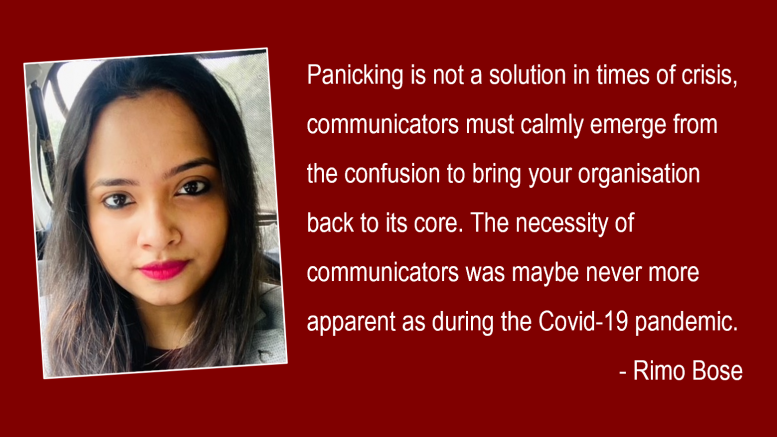Crisis communications- Expect the unexpected, imagine you working for a brand that is all set to launch their new ad campaign to strike a chord with the target audience. However, post publication of this new campaign, you instantly end up receiving negative views from the audience, and your marketing head is asking, “What is the next plan to negate such a backlash?” Something similar happened in 2017, when Pepsi released a campaign ad “Live for Now – Moments” with a principal message to exhibit a global message of unity, peace, and understanding, but for the audience it couldn’t portray the thought as expected. Rather the ad seemed to have missed out on the aspect fighting severe issues of human rights. Now you might ask, how did they repair the situation? They released an empathetic note, acknowledging the sentiment around the ad, flashing the same in their social media handles and also taken down the ad in less than 24 hours.
Taking cue from what had happened with a global brand, it is wise to say that crisis can take place even when you have the best of minds working for you. Here is the significant point, we might immaculate about strategy, and opportunity, market research and growth but one crisis can literally topple your entire plan. Often, especially during times of crisis, businesses you think have it together, mostly don’t. This is due to the fact that, instead of being well-planned, strategic, and comprehensive data on developments, contacts, and procedures, their crisis communication plans frequently consist of a rigid list of dos and don’ts.
Not to sound dramatic, but a crisis can lead to even bankruptcy! So when you have a well thought plan in place supported with relevant data, you have won half the battle. Effective, timely, and real-time communication is crucial to a company’s survival during times like these.
Collaborative approach
Working collaboratively and bringing individuals in when needed is crucial because strategies that take into account several views are more likely to succeed. Making a list of the worst-case scenarios with input from people with various experiences, backgrounds, and ethnicities helps you become more knowledgeable and crisis-ready. You don’t want to discover during a crisis that the strategy you came up with on your own is lacking because you neglected to account for what at the time looked to be an “extremely unlikely” eventuality.
Formulate a strategy
A small team only needs one or two stressful events before they discover that crises don’t just affect one part of the communications function. All of us who manage our reputations and brands own them. By adding current team members to the monitoring and response duties, you increase the possibility of seeing impending crises and provide additional hands to concentrate on the reaction. And there’s a very good reason to set things up this way. While there is a crisis affecting your team, none of the other marcomms functions are entirely effective. So much depends on how events play out.
Whatever the plan, the company must convey proper protocols to each and every one linked or asked about the crisis. This entails letting everyone—staff members, stakeholders, board members, etc.—about who will be speaking with the media and where they should send their questions. By doing this, the business will avoid having to later defend any comments made by unofficial corporate representatives.
Let the storm pass
Panicking is not a solution in times of crisis, communicators must calmly emerge from the confusion to bring your organisation back to its core. The necessity of communicators was maybe never more apparent as during the Covid-19 pandemic. Organisations and clients looked to communicators during that period to share the important concerns, advice, and contact information. Additionally, since the situation was always shifting and developing, communication teams were constantly present in business meetings to aid in planning.
This is much the same as what communicators do on a daily basis. By comprehending difficult problems swiftly, deftly, and with knowledge and expertise, we solve problems. Crises speed up and exacerbate all of those. But we’ve got this thanks to diligent planning, searching, and monitoring. Handling any crisis is all about timing, you don’t want to take a step that is premature and add one more crisis to your list, it is important to do constant monitoring and learn from the existing cases to firefight the probable ones.
The views and opinions published here belong to the author and do not necessarily reflect the views and opinions of the publisher.



Be the first to comment on "Crisis Communications is an integral part of Business Sustainability"